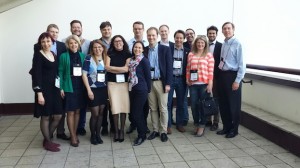 There are six things you must know in order to let your prospect pass – in other words, before you reward your prospect with a proposal. Your ability to conduct a professional and complete qualification of your prospect during the meetings leading up to this point in the sales cycle will provide you with the answers. Here are the checkpoints.
There are six things you must know in order to let your prospect pass – in other words, before you reward your prospect with a proposal. Your ability to conduct a professional and complete qualification of your prospect during the meetings leading up to this point in the sales cycle will provide you with the answers. Here are the checkpoints.
1. You understand the prospect’s problem thoroughly and are able to provide, at a minimum, a satisfactory solution.
If you don’t understand the problem completely, how can you be sure you can suggest a solution that would be enthusiastically endorsed?
2. The prospect has to do something – it is NOT an option to keep things the same.
If keeping things the same is an option for the prospect, they might very well select that option. Problems tend to fall into the “fix it” or “forget it” categories. Unless there’s a compelling reason to change, most find it easier just to do nothing. No pain, no change. Find the compelling reason why they’d want to go through the hassle of changing suppliers or implementing something new. If they can’t present a compelling case for change, they probably won’t change.
3. You have access to the decision maker and will make your presentation to him/her.
A good rule of thumb is never to make a presentation to someone who can’t say “yes.” It’s that simple.
4. The prospect needs to implement a solution in a time frame that makes sense for you from a business standpoint.
Time kills deals. What’s the point if your prospect doesn’t want to do anything for 18 months? Too much can happen to in the interim to send the deal sideways.
5. You understand the prospect’s selection criteria, and have a reasonable chance of meeting those criteria successfully.
What are the top three things they’ll evaluate when selecting a business partner, and why are those things important? This will give you a good handle on just how good your chances are. If this is a price driven deal, for example, and you can’t or won’t compete on price alone, why try to compete at all? It’s a very competitive world out there and your competitors are trying just as hard to win the business as you are. You’ve got to know their strengths and weaknesses, how they’re likely to react in certain situations, how hard they’ll fight for the opportunity that you’re trying to win.
6. The prospect is considering only a small number of suppliers and is not putting the deal out to every company in the area.
Generally, “RFPs” are not the most optimal type of business to win, since price plays such a major role in the selection process and the opportunity to communicate openly with the prospect is often quite limited. Prospects whose attitude is “the more, the merrier” are more interested in price than a relationship. Finally, increasing the number of options for the prospect decreases your chances of winning.




